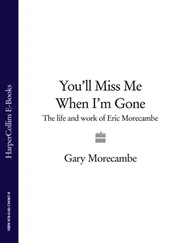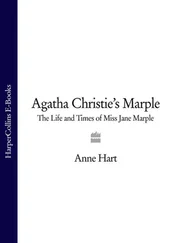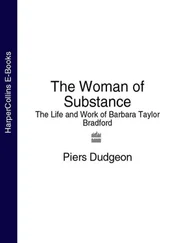His quest was most obsessive when looking for scientific manuscripts and books. Dee also started work on one of his own, the Propaedeumata Aphoristica (Preliminary Aphoristic Teachings), a series of maxims explaining astrological powers ‘by rational processes’. 5 For Dee wanted to discover the ‘true virtues of nature’, to find out how celestial events – the movement of the Sun, Moon and planets against the stars – influenced ‘sublunar’ (i.e. atmospheric and terrestrial) ones.
In early sixteenth-century England, astrology was in decline. This was not because of general disbelief in its powers. No one then seriously questioned that the planets influenced earthly events, any more than we would question the existence of gravity today. The cause of the decline was a general ‘torpor’, as the historian Keith Thomas put it, in English mathematics. 6 It was impossible, for example, to get English ephemerides, so they had to be imported at great expense. Dee’s aim was to shake England out of this torpor, and it was his Propaedeumata that set the trend.
Dee theorised that every entity in the universe emanated ‘rays’ of a force which influenced other objects it struck. He took as an example the forces of attraction and repulsion produced by the ‘lodestone’ – magnetised iron ore. This demonstrated in miniature what was happening throughout the cosmos. The rays’ important feature for Dee was that they could be studied scientifically. He pleaded for more detailed astronomical studies, so that the true sizes and distances, and therefore influence, of the heavenly bodies could be established.
This became the basis of Dee’s natural philosophy, and in several ways it anticipates Isaac Newton’s ground-breaking Principia Mathematica, which triggered the scientific revolution and modern physics, by over a century. There are similarities with Newton’s theory of gravity: the idea of a magnetic-like force emanating from physical bodies which acts on others; the emphasis on mathematics combined with measurement as a way of discovering how such a force works. Furthermore Dee believed, like Newton, that the universe worked according to mathematical laws.
His other works of this time, few of which have survived, only reinforce the impression that he was moving towards a decidedly scientific view of the universe. He wrote papers on perspective, on astronomical instruments and on the properties of circular motions. As early as 1553, while working for Northumberland’s household, he wrote a work dedicated to the duke’s wife on the ebb and flow of tides, a subject directly related to the idea of gravity – also an interest of Newton’s.
He even endorsed the observation that two bodies of unequal weight fall to the ground at the same speed. 7 The acceptance that this could be the case, even though it flew in the face of common sense and accepted theories of motion, is usually attributed to Galileo Galilei (1564-1642), and cited as proof of the great Italian astronomer’s pioneering role in making observation the keystone of scientific enquiry. However, Dee knew of it (and pointed out that others did before him).
But the Propaedeumata Aphoristica was no proto- Principia Mathematica : for at its heart lay a force that was magical as much as physical. This is revealed by the book’s title page, which shows the qualities of heat and humidity, the Sun and the Moon, the elements of earth and water all connected to the mystical symbol which dominates the centre of the image: the monad.
The monad was an astrological sign Dee invented. He regarded it as the key to a true understanding of the unity of the cosmos. Its appearance on the title page of the rationalist Propaedeumata Aphoristica indicates that Dee’s idea of physics strayed far beyond the limits of physical reality.
Dee’s belief that ‘rays’ emanating from physical objects could affect the human soul as well as body makes the Propaedeumata essentially an astrological work. For this was why astrologers, by applying principles abstracted from centuries of practice, could divine something about a person from the configuration of the heavens at the moment of his or her birth, and why, with a scientific understanding of such bodies and the rays, so much more could be achieved. Dee also suggested that the tools used to manipulate light could also be used to manipulate these emanations. Lenses and mirrors might be able to concentrate, reflect or refract these rays. Such instruments might even make them visible. Perhaps (though he was circumspect on the matter, because of its connotations of conjuration), a fortune-teller’s crystal ball works as a sort of lens, its material being of such quality that it is able to capture and focus the invisible rays in its immediate vicinity.
Thus, at the heart of Dee’s science lay what has come to be called ‘natural’ (as opposed to supernatural) magic. When God created the universe, itself an act that Dee accepted to be beyond scientific understanding, He let loose a divine force which causes the planets to turn, the Sun to rise and the Moon to wax and wane. Magic, as Dee saw it, is the human ability to tap this force. The better our understanding of the way it drives the universe, the more powerful the magic becomes. In other words, magic is technology.
Dee planned the Propaedeumata to be his magnum opus, but managed to complete only a hastily written summary. During the final years of Mary’s reign, England suffered a series of disasters: bad harvests and famines at home, diplomatic failures and military blunders abroad. Meanwhile, two devastating epidemics of influenza (which got its name from the belief that it was caused by malign astrological influences) swept the country in 1557 and 1558. Falling seriously ill, Dee thought his days were numbered. He set his affairs in order, and arranged for a draft of Propaedeumata to be published, handing over the rest of his literary affairs to Pedro Nuñez.
Queen Mary was also in decline. At the end of 1557, six months after Philip’s departure for Spain, she announced once again that she was pregnant. In February 1558, in anticipation of the birth, she withdrew to her chamber. As before, the baby failed to materialise, though Mary was still waiting at the end of March. She finally gave up hope in May, and fell into a depression from which she never recovered – dying on 17 November 1558. Anyone associated with her regime and religion was now dangerously exposed, chief among them Bishop Bonner and his chaplain, John Dee.
After all the stormy, tempestuous and blustery windy weather of Queen Mary was overblown, the darksome clouds of discomfort dispersed, the palpable fogs and mists of most intolerable misery consumed, and the dashing showers of persecution overpast, it pleased God to send England a calm and quiet season, a clear and lovely sunshine, a quietus from former broils, and a world of blessings by good Queen Elizabeth. 1
Thus wrote the chronicler Raphael Holinshed in the 1570s. He could hardly have been further from the truth.
Legend records that she received the news of her accession while sitting alone beneath an oak at Hatfield House reading the New Testament in Greek, a scene that sublimely combines the Protestant virtues of humanism, piety and humility. One of the two nobles sent to make the announcement was the Earl of Pembroke, who, having switched allegiance from Northumberland to Mary, managed with equal agility to switch back again: he was rewarded with a position in Elizabeth’s council but never with her affection or admiration.
Entering London less than a week after her half-sister’s death, Elizabeth was received with rapture. Bonner stood in line at the walls of the City to welcome her. She offered her hand to the Mayor and aldermen to be kissed, but when Bonner approached and knelt before her she withdrew her hand and walked on. The message was obvious – here was a woman who was going to make a clean break with the past, theologically and politically.
Читать дальше












